Blanket and Blessing Ceremony Fosters Community and Connection
Published Date
Article Content
Connection is critical in Native American culture. Connection to the natural world and ancestral lands, coupled with strong spiritual, community and intergenerational knowledge-sharing drive deep relationships across all generations.
The University of California San Diego School of Medicine recently held its fourth annual Indigenous Medicine Ceremony, which honors and recognizes students who are training to provide health care to Native American and Indigenous populations through the school’s Program in Medical Education - Transforming Indigenous Doctor Education (PRIME-TIDE).
First year medical students are presented with a “Blanket of Knowledge.” Created by Eighth Generation, a Seattle-based art and lifestyle brand owned by the Snoqualmie Tribe, each blanket is designed by a Native American artist. According to the designer of this blanket, the design is based on the ancient Northwest Coast art practice of Chilkat weaving, one of the most complex weaving techniques in the world. The intricacy of the circular and curved shapes and patterns on the blanket give the perception of movement when draped over the shoulders.
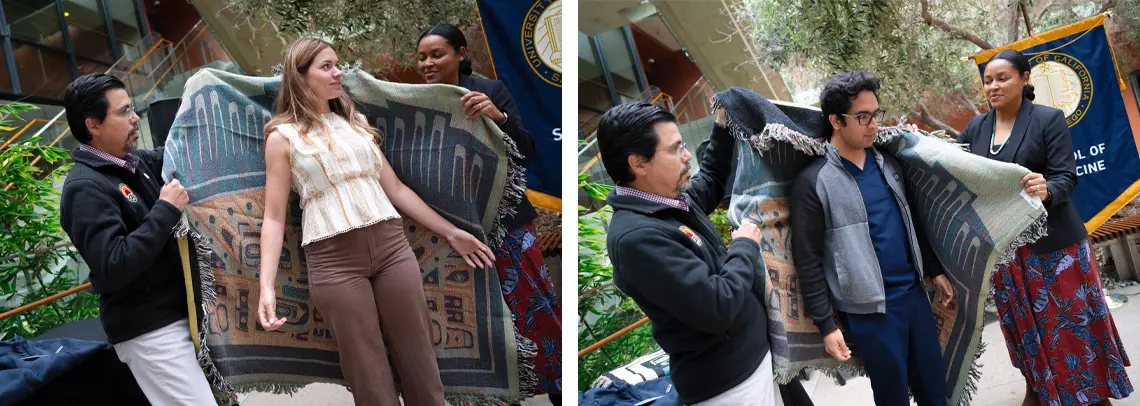
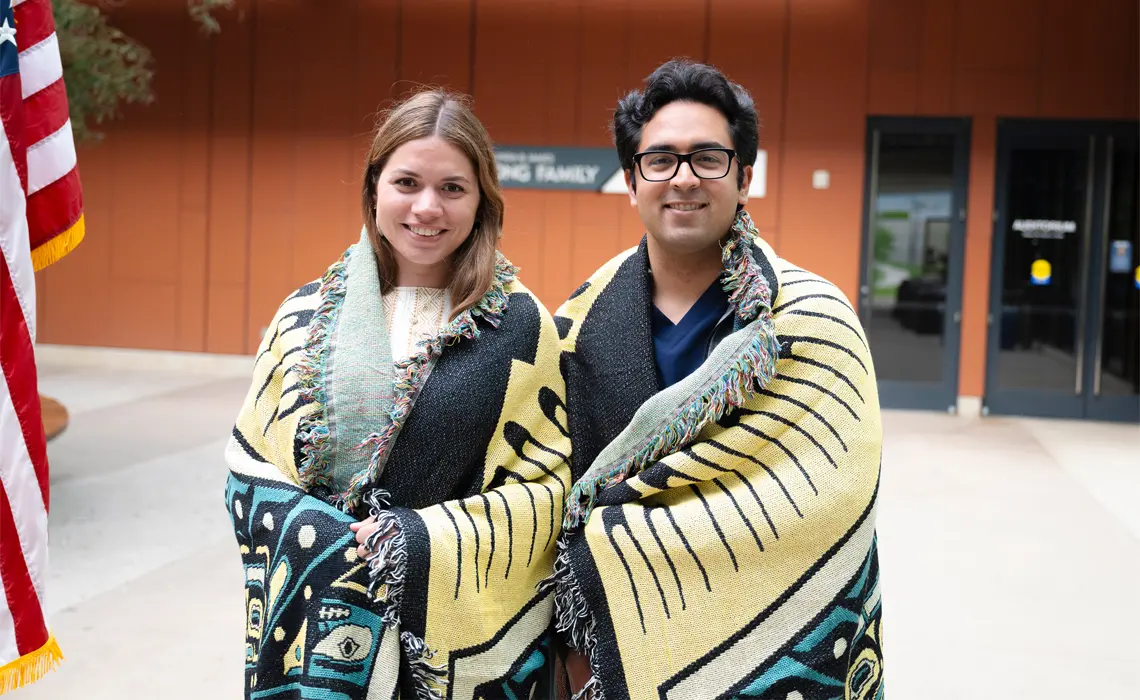
For the PRIME-TIDE students, the ceremony signifies the community’s support and recognition of this new journey they are on. The students follow a curriculum path dedicated to preparing them for careers focused on advancing health equity for Native American people. During the five-year program, students complete four-years of medical school, plus a master’s degree.
The ceremony is steeped in Native American traditions and culture. A traditional smudging was performed at the start of the ceremony by Stanley Rodriguez, Ed.D., who is from the Santa Ysabel Band of the Iipay Nation, and a commissioner for the California Native American Heritage Commission. Smudging provides spiritual cleansing, purification and blessing. It is believed that the smoke from the ceremony provides a bridge connecting the spiritual and physical realms promoting balance and harmony.
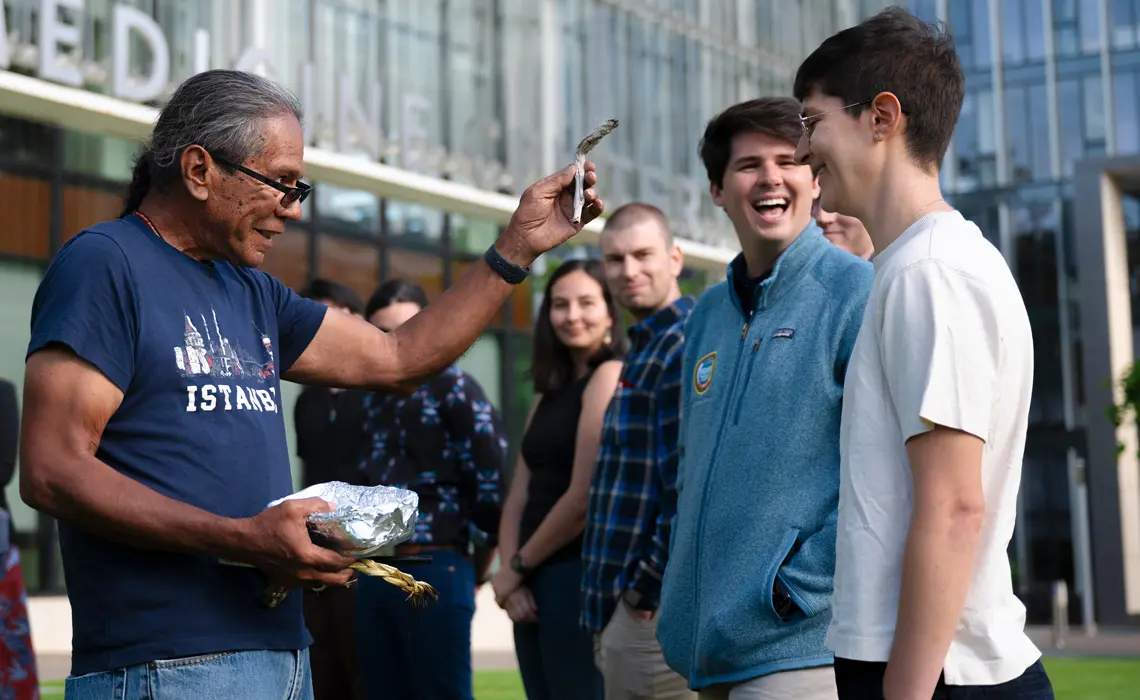
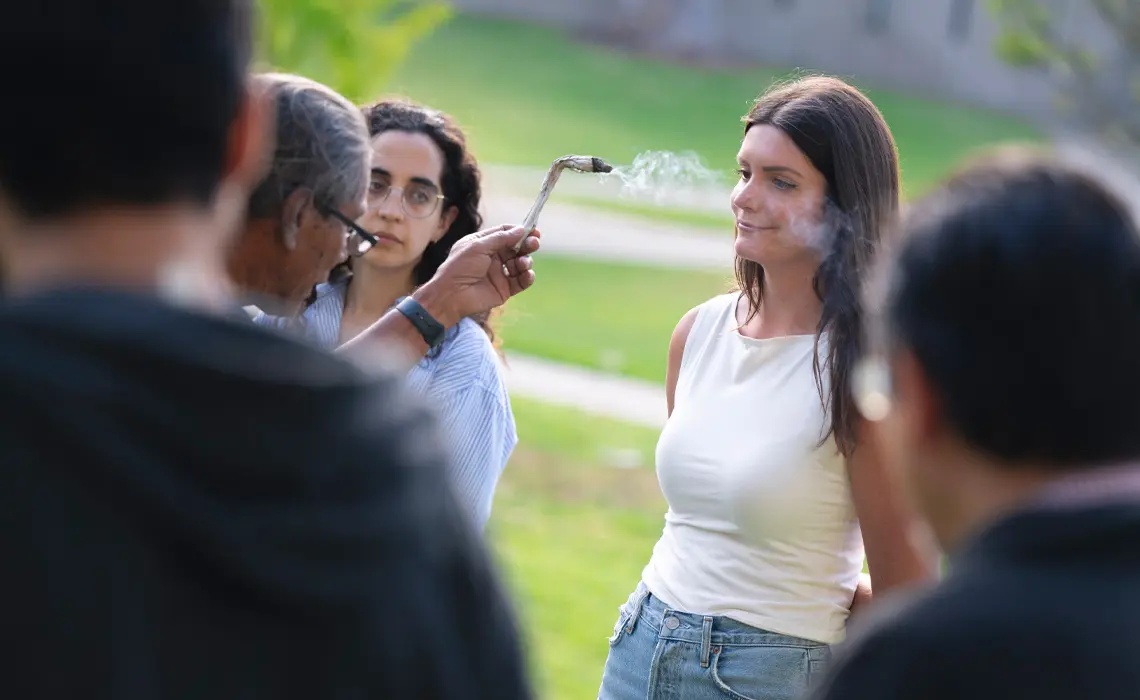
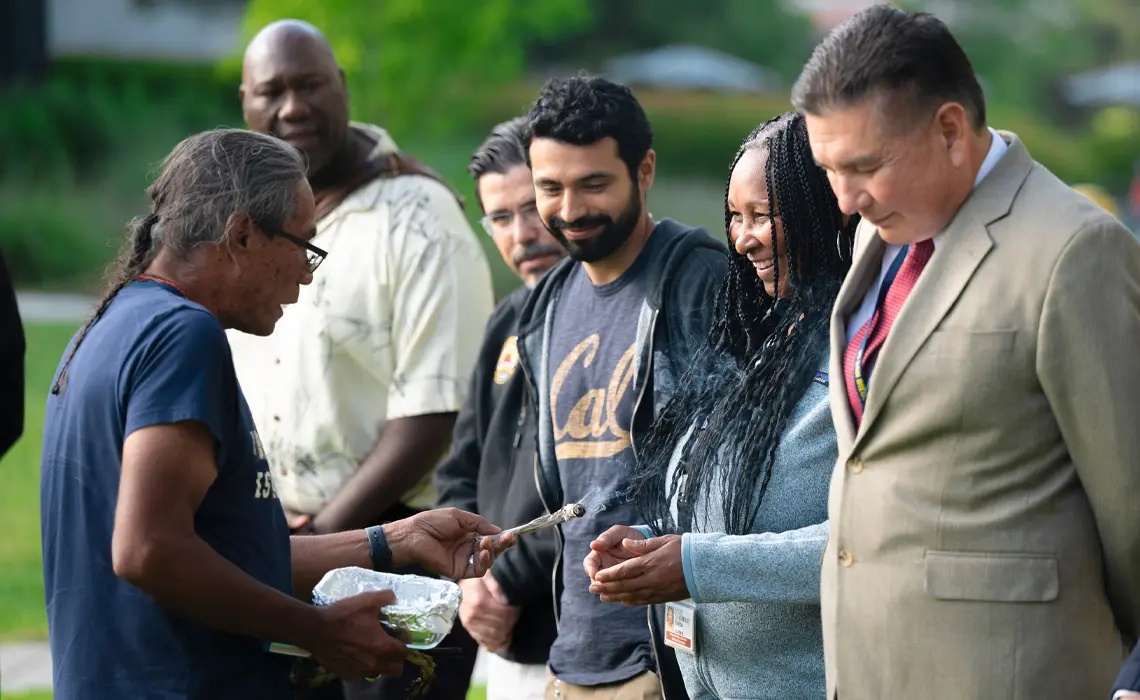
Bird Singers, from the Kumeyaay Nation, provided blessings and reminders for the students, through songs, that the knowledge they are learning is meant to be shared.
“What you are learning today, and every day, is for the betterment of your people, but also for all of mankind,”
Blue Eagle Vigil, a member of the Viejas Band of the Kumeyaay Nation.
Additionally, members of the Soaring Eagles Powwow Dance Group of San Diego, shared traditional dances at the ceremony. The dancing ended with a Round Dance in which everyone in attendance was encouraged to join in the celebration.
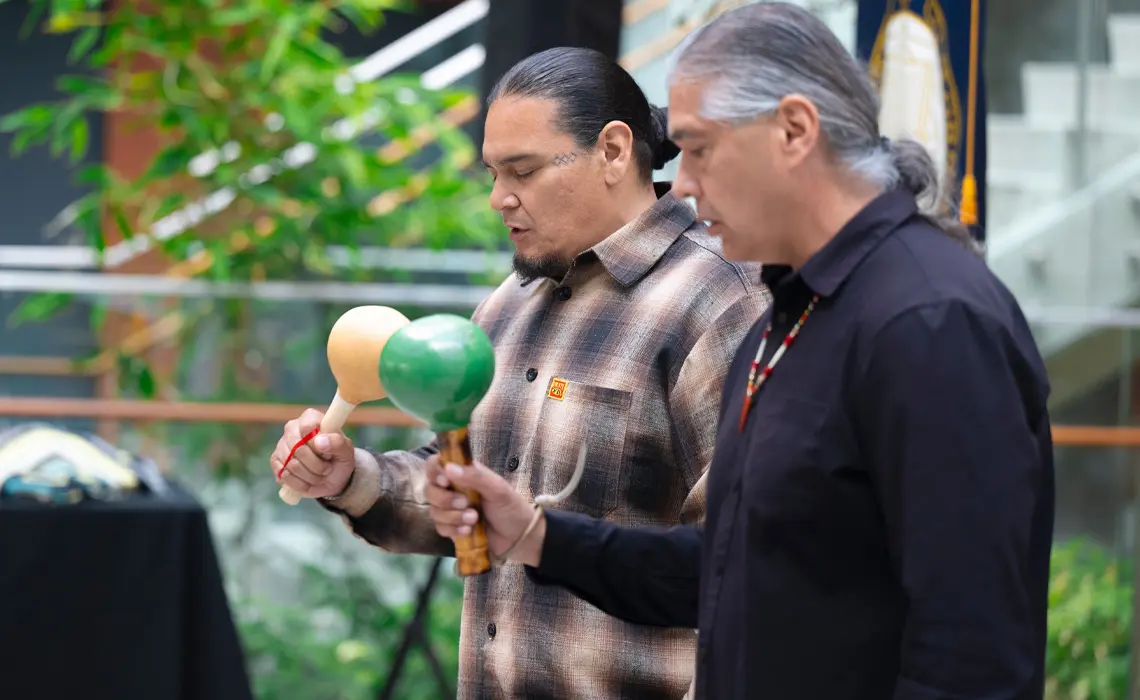


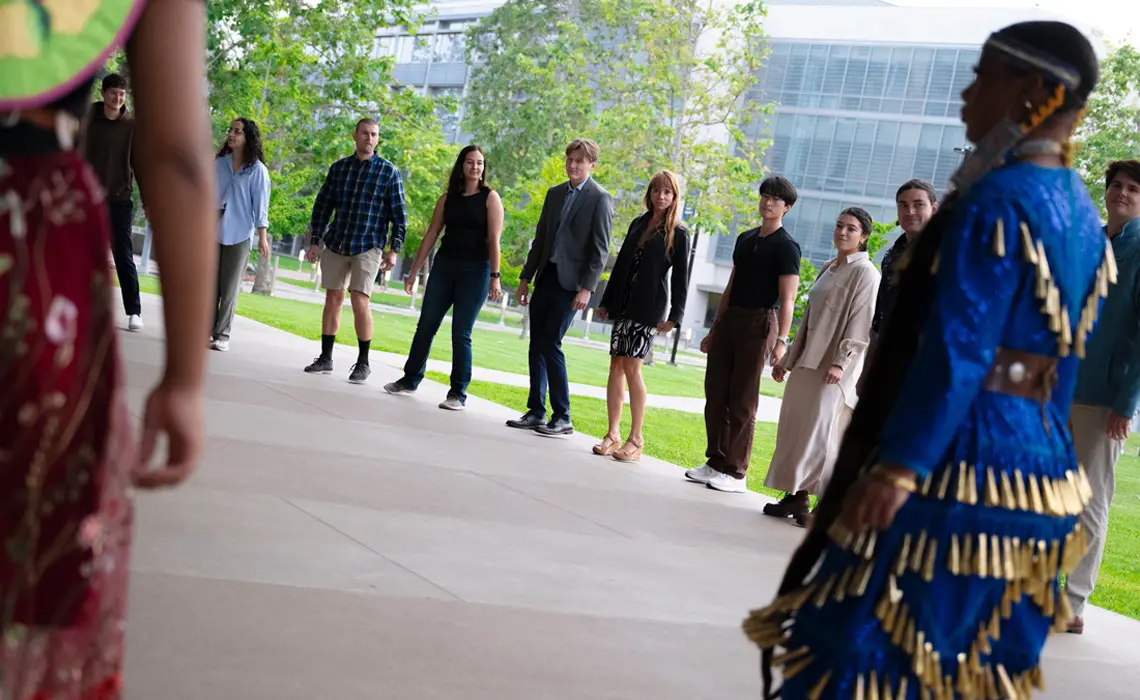
During the ceremony, after the first-year medical students received blankets, second-year medical students received jackets. The first-year students then acknowledged their “aunties/uncles,” by providing gifts which are meant to show respect and honor, recognizing the older students' experiences and status. They also acknowledged and provided gifts to faculty and community mentors and supporters who have made an impact on their journeys so far.
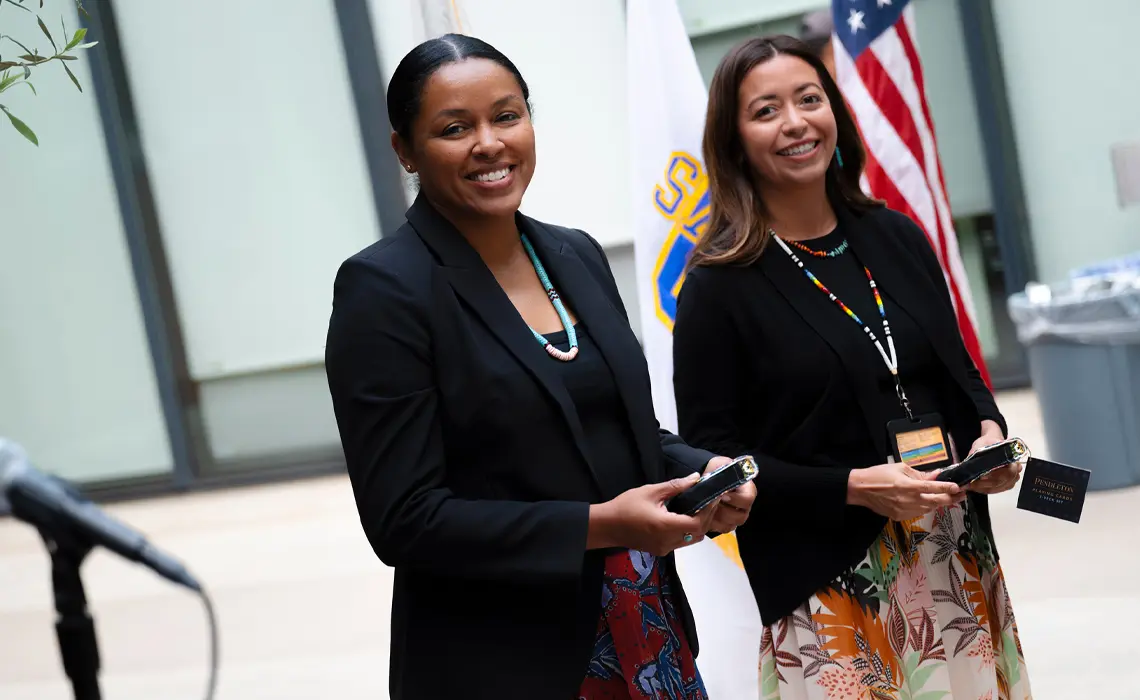
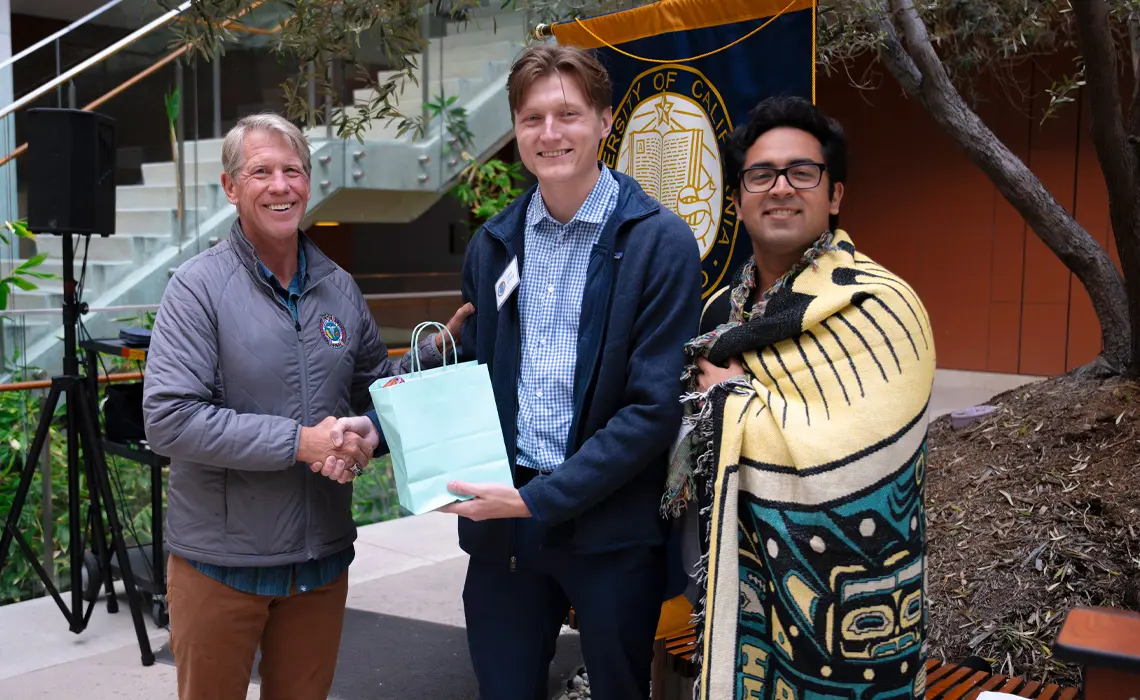
The ceremony ended with a traditional Cherokee story told by Katie Mostoller, a PRIME-TIDE student, who is also in the Medical Scientist Training Program. The story of the cornhusk doll reminds us of the dangers of getting caught up in ourselves and selfish pursuits. The doll was created with a beautiful face. Her purpose was to play with the children and teach them a variety of lessons. But one day, she caught a glimpse of her own reflection in the waters of a creek and realized just how beautiful she was. She was so taken with her own appearance that she forgot her original purpose and instead began spending her days and nights staring at herself in the water’s reflection. The Creator found her after noting that she was having a hard time doing what she was meant to do. He told her she had lost her purpose, but he was going to help her rediscover it. So, the Creator bopped cornhusk doll on the nose, making her face disappear so that she could again fulfill her purpose without distraction.
“The story reminds us that we are each created with a specific purpose. Sometimes we all need a little extra help in discovering or rediscovering that purpose. Each of us has something vital that we are meant to do that cannot be replaced by anyone else,” said Mostoller, who added that this ceremony marks one of her favorite parts of the year. “In recognizing the first-year students, we get to see all of your accomplishments build up and see your impact in the community really start to take root. You are all making such beautiful connections with young people in the community who are interested in medicine.”
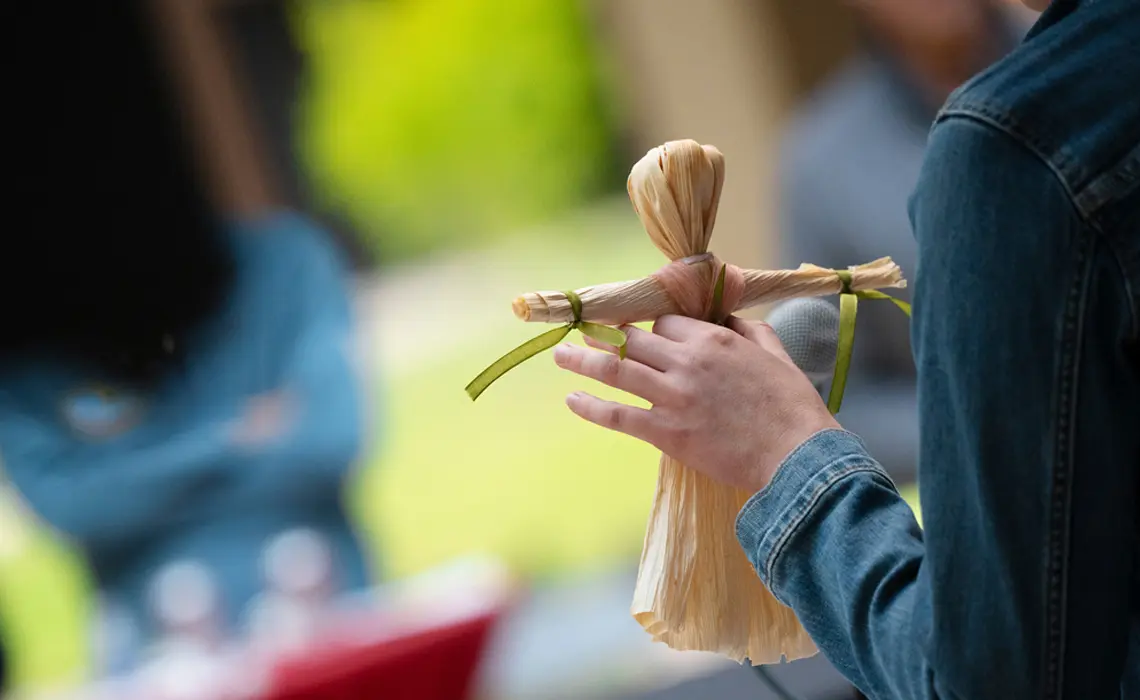

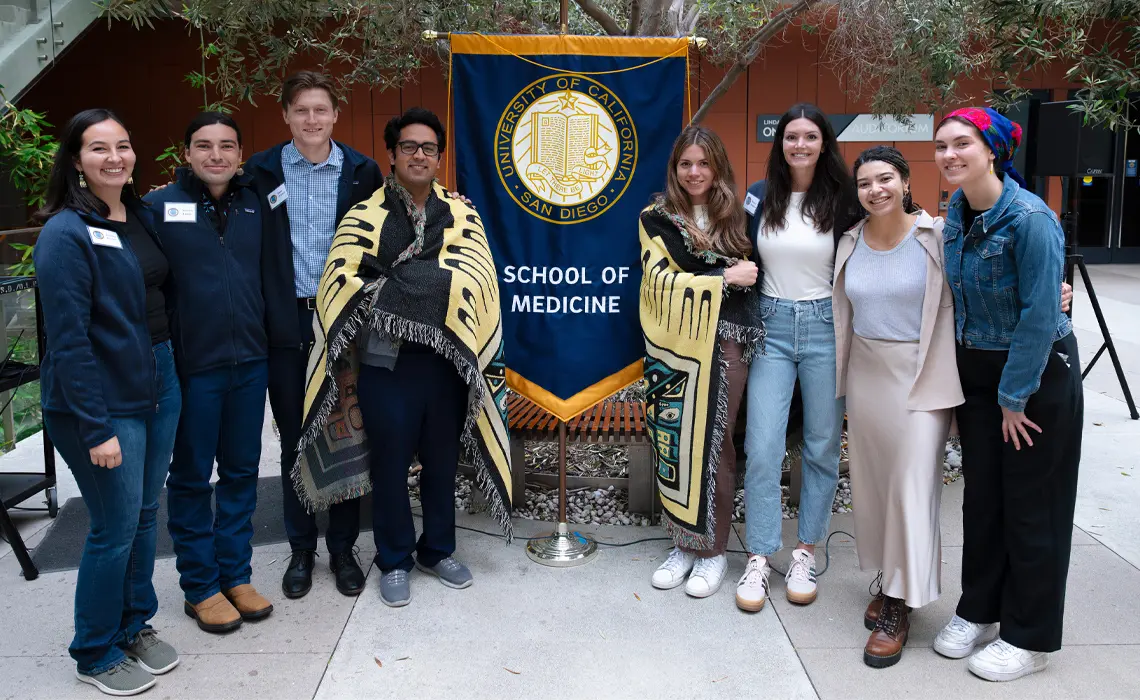
Share This:
You May Also Like
Stay in the Know
Keep up with all the latest from UC San Diego. Subscribe to the newsletter today.



